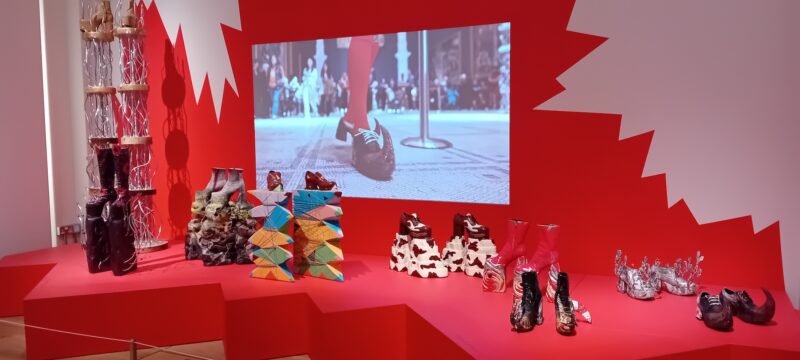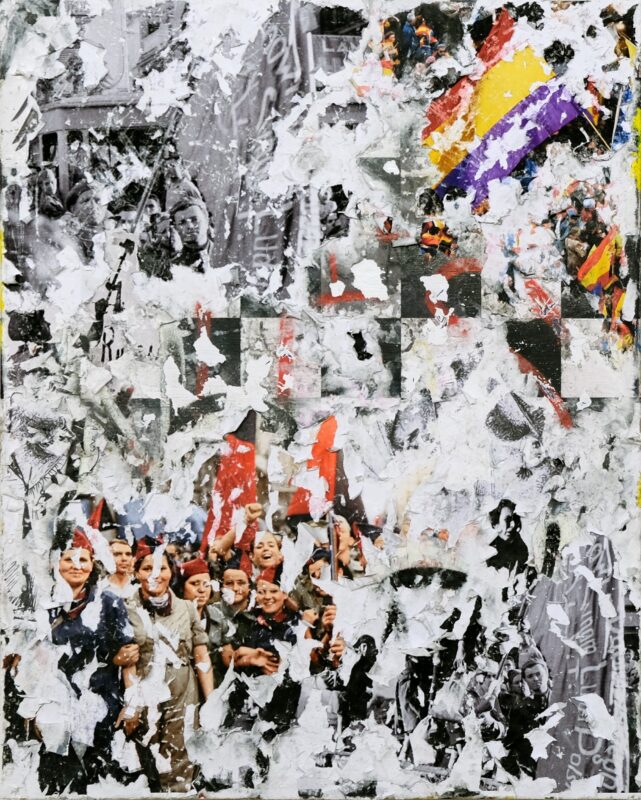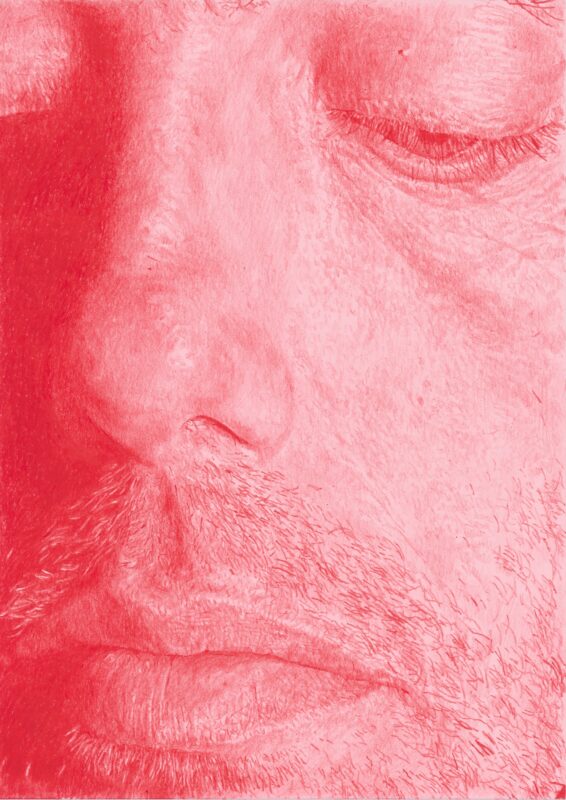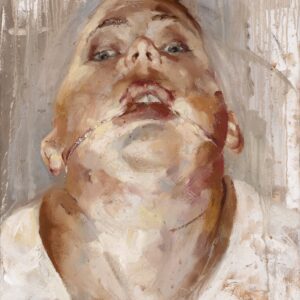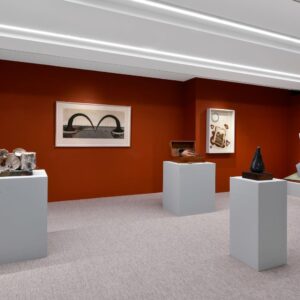It would have been easy in recent years to have given in to the twenty-first century’s special brand of polarising hysteria when it comes to landscape painting. It would have been all too effortless to shrug and chatter at its usurpation by photography, to consign it to the nineteenth century as a quaint relic of art history. But as all wise people know, that which is easy is rarely worth doing. And so here we are – it’s the great year of 2023 and the Saatchi Gallery is awash with beguiling, resonant, poignant landscapes.
Curated by Zavier Ellis, the brains behind much-missed gallery Charlie Smith London, the show features the work of seven artists working – visually, thematically, conceptually – around landscape painting, situated within the tradition and beating a path around it. Anybody who climbed that unassuming staircase to the floor above The Reliance pub, where Charlie Smith was housed between 2009 and 2021, will know Ellis curates his shows with a razor-sharp intellect. Here he has performed two strokes of curatorial magic. First, he has selected only women artists, deftly subverting the art-historical tradition of the field of landscape painting being dominated by men who use women as mere motifs – as muses, myths or nudes – mere objects in the service of nature. Second, the working definition of ‘landscape’ is amorphous, rattling the cage in which this most noble artform has been contained for too long.
Although the artists have their idiosyncratic approaches to their subject, there is a unifying theme that courses through the exhibition like a trusty steed on a mission to wash salt from the viewer’s eyes: whereas the likes of Gainsborough and Constable are concerned to show us what the landscape is, these artists are focused on what it means to us as the dominant species, what our relationship to nature says about us and our fate, more like a latter-day Hockney. That said, it is not – necessarily or overtly – about climate change or anything of the sort; rather, it is a show in which art reflects on the connection between humanity and the land it lives on as a space of possibility and drama.
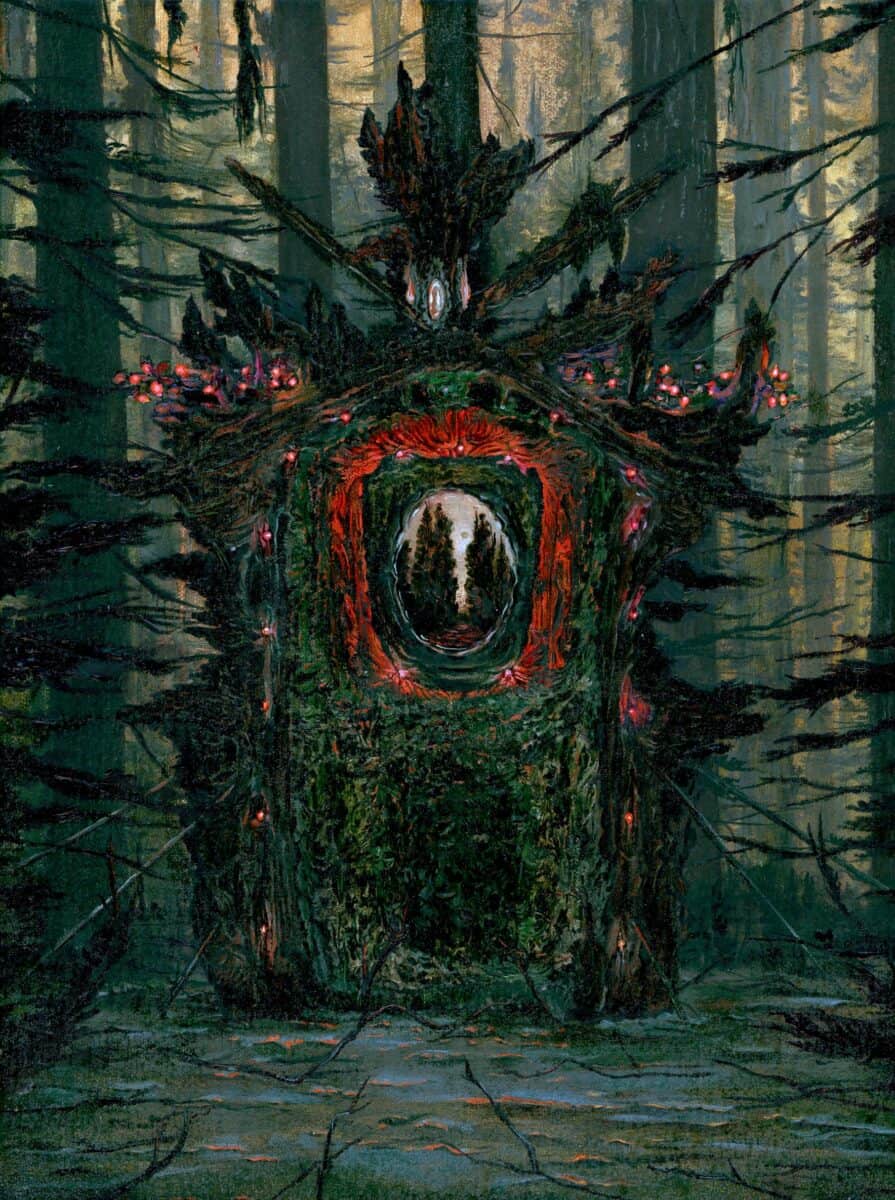
The scale varies from the diminutive to the monumental. Joanna Whittle’s masterful, luminescent paintings contain worlds of narrative in small rectangles of oil on copper or Perspex whose durable surfaces hold the paint in a permanent state of glowing resistance to entropy. WYBMADIITY You are missed (I miss you) (2023) exudes so much pathos that there is nothing the burnt orange sky or the dazzling lights therein can do not to fill the viewer with an uneasy thought of what goes on behind closed doors. In Whittle’s work, the landscape is a site of persistence, of memory, of happenings just off the edge of the frame.

Larger scale works include Kirsty Harris’ majestic and chilling depictions of mushroom clouds and the billowing silence of nuclear tests deep in the Nevada desert, such as Charlie (2017), which consumes an entire wall with both its painterly finesse and its brutal seriousness. The rushing cloud of death, spiralling and puffing in urgency, contrasts the barren solitude of the sands and rocks and sky that bear witness to humanity’s folly. Harris’ work is exemplary of Ellis’ curatorial genius here, for these paintings are not so much of the landscape as they are about the grim and squalid goings on within it, and, of course, our propensity to obliterate the it for anything or nothing at all.
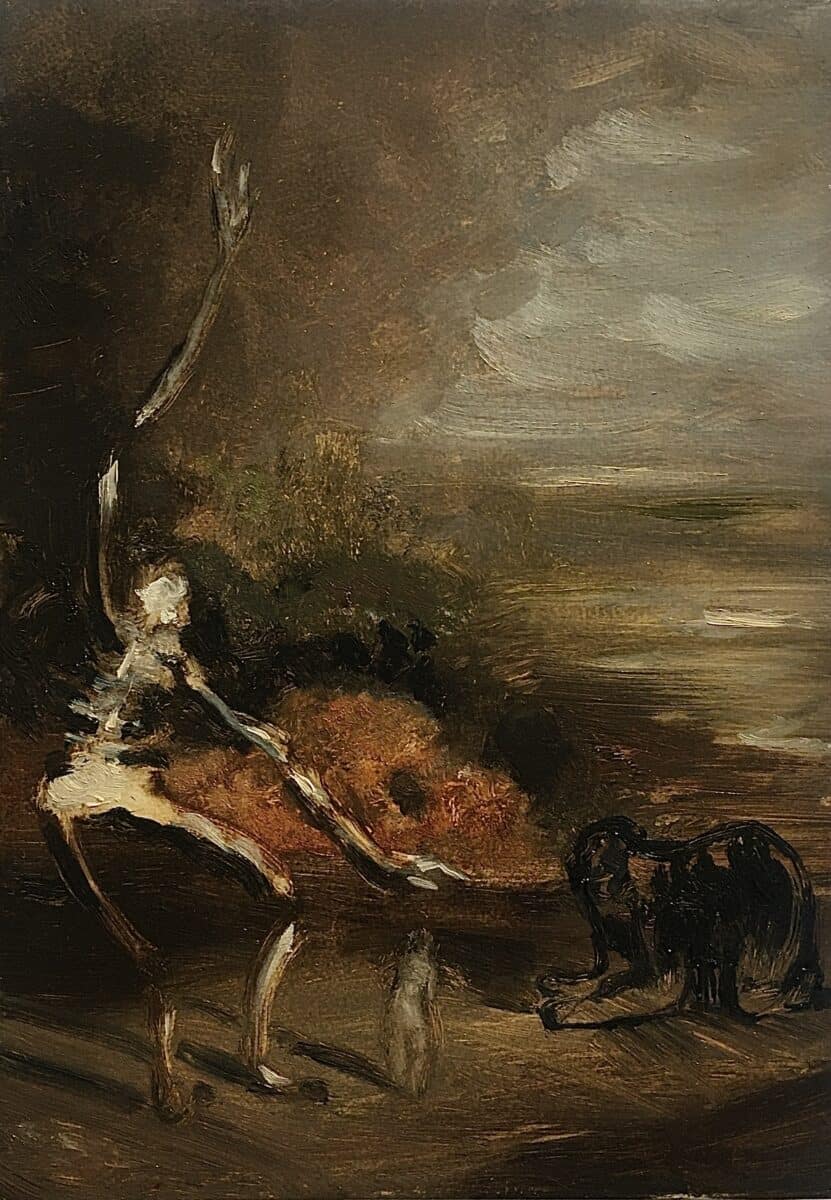
Lisa Ivory’s suite of fantastical, earthy and slightly grotesque scenes, dramatic in subject and yet small in scale, are, in a curious sort of way, the most traditional works in the show. This is in at least the sense that they centre around familiar motifs of the landscape tradition, such as wildlife, stormy skies and mysterious trees, but they subvert it with what feels like a ritualistic rhythm of action and character. It feels familiar in the art-historical sense but very alien in any narrative sense.

The unifying theme in the show is a concern for narrative, for the stories the landscape tells and the stories we impose upon it, whether fantastical or realistic, beautiful or violent. In that sense, it is a very twenty-first century reconsideration of landscape painting. Although the land is a vehicle for humanity’s perpetual drama, an entity without an identity of its own, entirely defined by what we do on, around and within it, this time the landscape, although always already claimed, is claimed by those who deserve it.
Beyond the Gaze – Reclaiming the Landscape, Saatchi Gallery, London, 14th July – 28th August 2023
Curated by Zavier Ellis, Featuring work by Emma Bennett, Kiera Bennett, Kirsty Harris, Dannielle Hodson, Lisa Ivory, Melissa Kime, Joanna Whittle

